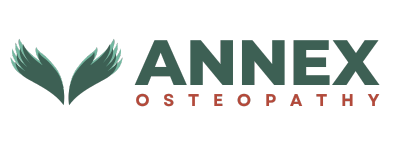Osteo-Articular Corrections
Osteo-articular correction is an osteopathic technique that aims at the restoration of proper mobility and positioning of the joints.
This therapy involves low grade, slow speed movements. Osteopathic practitioner first places your bones in a precise position and wait for your body to relax before applying gentle pressure.
The therapist never moves your joint beyond its physiological range of motion. It helps to gently release the tensions in joint capsule and thus restore its mobility.
This technique can be applied to any joint in the body, because the therapist always respects the proper anatomical position, the structure, and the function of the particular articulation.
This technique improves the body’s response to pain by reducing sensitivity to pressure in the targeted tissue.
As a result, after mobilization, the joint becomes less sensitive, leading to a decrease in overall pain levels.
Most people with stiff or painful joints may benefit from joint mobilization.
Joint mobilization is a hands-on technique used by Osteopathic manual practitioners. It involves the application of pressure over a stiff or painful joint. This treatment can improve your range of motion and function while reducing your pain. It is thought to do this by decreasing the sensitivity or excitability of the tissue in the targeted joint.
Joint mobilization therapy may help you manage symptoms of the following conditions:
- Headaches, including migraines and tension headaches
- Chronic back and neck pain.
- Knee arthritis.
- Shoulder Pain or Impingement.
- Ankle sprains.
What to expect on your first visit.
What to expect from joint mobilizations
Call Annex Osteopathy today (416) 550-0143 to book appointment.

